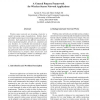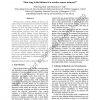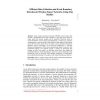987 search results - page 81 / 198 » Attack-resilient time synchronization for wireless sensor ne... |
COMPSAC
2006
IEEE
15 years 4 months ago
2006
IEEE
Wireless sensor networks are becoming a basis for a rapidly increasing range of applications. Habitat, flood, and wildfire monitoring are interesting examples of such applicatio...
AINA
2009
IEEE
15 years 3 months ago
2009
IEEE
Wireless sensor networks (WSNs) are known to be highly energy-constrained and each network’s lifetime has a strong dependence on the nodes’ battery capacity. As such, the netw...
JUCS
2002
14 years 9 months ago
2002
: New wireless protocols like W-LAN and Bluetooth allow establishing spontaneous networks and peer-to-peer exchange of information. At the same time standards like Semantic Web and...
IPSN
2005
Springer
15 years 3 months ago
2005
Springer
A wireless sensor network consists of a large number of small, resource-constrained devices and usually operates in hostile environments that are prone to link and node failures. ...
102
click to vote
GISCIENCE
2010
Springer
2010
Springer
Efficient Data Collection and Event Boundary Detection in Wireless Sensor Networks Using Tiny Models
14 years 11 months ago
Using wireless geosensor networks (WGSN), sensor nodes often monitor a phenomenon that is both continuous in time and space. However, sensor nodes take discrete samples, and an ana...



